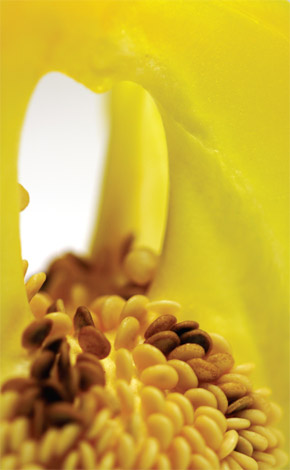
Q. How would I go about preserving the seeds produced from my vegetable plants, and use them for next year’s planting?
A. Collecting and saving seed from one year to the next is not all that difficult, however, not all vegetable seeds are created the same. Seed saving makes perfect sense with the open pollinated or heirloom types of vegetables but not with the hybrid varieties. It’s all about genetics. Open-pollinated varieties are self or cross-pollinated by bees and/or the wind. Their seed produce plants that are very similar to the parents. Their seed carries on the qualities of the parents, or “breed true” as the saying goes. This is not the case with hybrid varieties. Humans cross two different specific parents to develop the F1 hybrid. Their offspring produce a new, uniform seed variety with specific characteristics from both parents. For example, a breeder may choose to cross two tomato varieties to make an F1 hybrid that exhibits the early maturity of one parent and a specific disease resistance of the other. The unique characteristics of a hybrid are very uniform but only in the first generation, F1. Seed saved from these varieties have unpredictable characteristics the following year. You’ll need new seed and/or plants each year to duplicate these varieties. The seed packet, catalog description, or plant label should indicate if a variety is an open pollinated or hybrid variety. Other clues include: F1 or F2 appears in parentheses after the name, it is a hybrid. If the letters “cv” are visible, it means the seeds are from a “cultivated variety” and thus are not suitable for seed saving.
Seed is collected from healthy plants with mature fruits that are dried as soon as possible. A seed may not be mature at the same time a fruit reaches its mature color, so be patient. Tomato seeds and others are contained in a gel-like material. You separate the seed from the gel by placing the mixture in a jar of water, and stirring it a few times a day until it ferments. Once it ferments, the seeds should drop to the bottom of the jar. The liquid is poured off and the seed is collected for drying. One method used is to spread the seeds out on paper towels, which are placed in a warm, dry and well-ventilated location for about a week. After the seed is dried, you remove any pulp that may remain on the seed before packaging the different varieties in envelopes with a label. The envelopes are stored in an airtight glass jar, such as a pickle or mayonnaise jar with a packet of silica gel. The silica gel removes any moisture that develops. The rule of thumb for storing seed from one season to another is to keep the seed cool and dry. Ideally, they are stored in a refrigerator; otherwise, the garage will do. You sow the seed in flats next February for planting into the open ground in April and May.
Buzz Bertolero is Executive Vice President of Navlet’s Garden Centers and a California Certified Nursery Professional. His web address is www.dirtgardener.com and you can send questions by email at dirtgarden@aol.com or to 360 Civic Drive Ste. ‘D’, Pleasant Hill, Calif. 94523